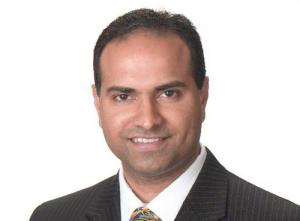Consumer Perspectives on Electrification
Omar Siddiqui is a Senior Technical Executive, Energy Utilization, EPRI.
Customers today can choose among unprecedented and ever-increasing technologies and service options, and these affect their electricity consumption.

Their growing adoption of internet-connected energy management controls and end-use appliances, variable capacity heat pumps, energy storage systems, and self-generation platforms such as solar photovoltaic systems, has the potential to fundamentally alter traditional patterns of net electricity use, expressed graphically as load shapes.
Coupling these technologies with time-varying electricity rate structures can magnify such effects.
As more customers adopt these technologies and service options these effects will intensify. However, expectations of how customers will adopt and use emerging technologies and services are shrouded in uncertainty.
To the extent that changing customer dynamics are not adequately reflected in electric utility forecasting operations and planning, system reliability and economics could be impaired over the long run.
To integrate these changes and their impacts with grid operations and planning, utilities need the capability to model the dynamics of customer adoption and use of emerging technologies. This requires the coordination of data among multiple models and departments within the utility as the models evolve.
In response to this need, EPRI is developing a framework for the Customer Model of the Future based on empirical load data and sound behavioral science, to model the dynamics of customer choice and energy use. This can yield load forecasts that are more accurate and actionable for utility operations and planning.
As envisioned, the model's ability to predict the pace at which customer segments are likely to adopt emerging technologies and services can simulate grid impacts, which in turn can inform capital planning.
Moreover, a spatial distribution of impacts, based on mapping the concentration of customer segments, may indicate locations that require upgrades in power delivery infrastructure.
By the same token, a spatial analysis enabled by this customer model may identify locations for which targeted adoption of certain customer-sited technologies could beneficially impact grid flexibility and reliability at a cost lower than traditional supply-side options.
With respect to efficient electrification, the Customer Model of the Future can help utilities anticipate the trajectory of customers replacing traditional technologies with electric technologies.
Prominent examples include heat pump water heaters replacing gas water heaters or industrial infrared heating replacing gas heating. Because such conversions are driven largely by economics, a customer's location and comparative utility rates are key factors.
Accordingly, the model framework can help identify nodes on the utility network that may be impacted by electricity consumption changes spurred by electrification, which may subsequently require investment in power delivery infrastructure.
Another important aspect is the integration of utilities' customer-facing information systems into a platform to engage with customers in a variety of ways. This platform will support grid modernization by enabling the customer as a grid resource and new services to benefit the customer.
EPRI sees an opportunity to advance research in collaboration with utilities and industry to create a customer-centric platform to address challenges in offering new customer services. Three facets of this new platform are meant to enable enhanced interaction between utilities and their customers.
First, customer choice, convenience, and control. Incorporating web services and standard integration approaches to augment the customer experience with innovative customer products, solutions, and services.
Second, grid-to-customer relationship. Innovative ways to engage customers, and to operationalize information and control associated with Internet of Things (IoT) devices, sensors, and smart connected appliances. For example, advanced customer information can improve load forecasting, and control of customer resources can become a capacity resource for the grid.
Third, an integrated grid. Integrating customer technologies to support grid flexibility and reliability, within the customer's parameters of comfort and control. Building on that integration, utilities or third parties can provide customer services such as energy analysis, equipment diagnostics, reliability management, and equipment management.
Absent a Customer Model of The Future to help adapt to changing customer needs and options, utilities risk missed opportunities for effective customer engagement. They also risk suboptimal infrastructure investment, leading to service dislocations that could impair service reliability and compromise affordability.
Integrating customer dynamics into utility forecasting, operations, and planning will be critical to maintaining reliable, affordable, and environmentally responsible electric service to benefit society.
PUF 2.0 Articles: Consumer Perspectives on Electrification



